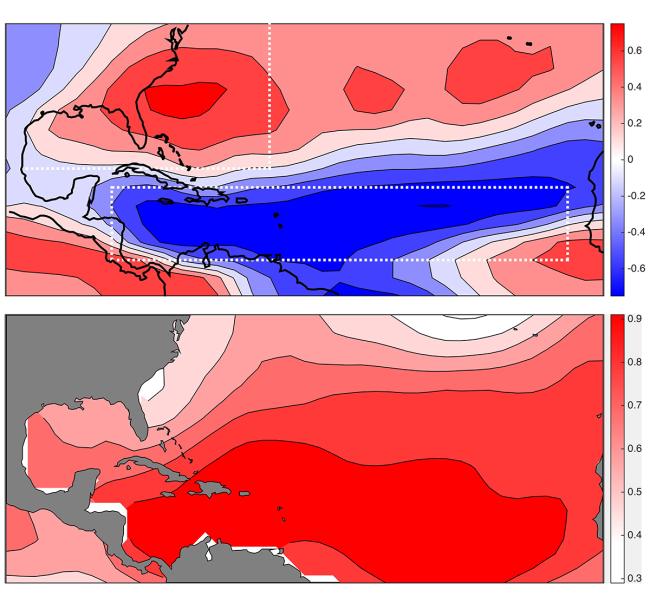Hurricanes more likely to weaken along the US coast during active periods
A new study, published in Nature, shows that when conditions in the deep tropics are good for hurricane intensification, they are bad along the US coast. This sets up a barrier around the US coast during active hurricane periods that inhibits hurricanes from strengthening and usually causes them to weaken. The barrier is formed by coherent patterns of vertical wind shear and cooler ocean temperatures that set up along the coast. The better the tropics are for hurricane intensification, the stronger the intensification barrier along the coast. This is remarkably fortuitous for residents along the US coast; the climate system provides extra protection from hurricane threats during periods when the basin-wide activity is at its greatest. Since the mid-1990s, the Atlantic region has been in a comparatively active hurricane period.

During periods of low basin-wide activity, when the tropics are more hostile to hurricanes, the opposite happens: the region around the US coast becomes more hospitable to hurricanes. During these quiet periods, there are fewer hurricanes wandering the Atlantic, but the ones that do happen to wander near the US coast are much more likely to rapidly intensify. So even though the overall coastal threat is lower during quiet periods, it’s particularly dangerous when a major hurricane does manage to form and approach the coast. The last quiet period went from about the late 1960s to the mid-1990s.
At this point, it’s unclear whether this relationship might be degraded or enhanced as the planet warms. If it’s enhanced, then the barrier will increasingly offset the increased threat during active periods. If it’s degraded, then society loses a natural barrier, and US coastal hazard exposure and risk could increase significantly.
Hurricane intensification along United States coast suppressed during active hurricane periods (Nature)
NOAA National Centers for Environmental Information
Topics
- Weather
- Atlantic Ocean
- Hurricane
- Extreme Events
